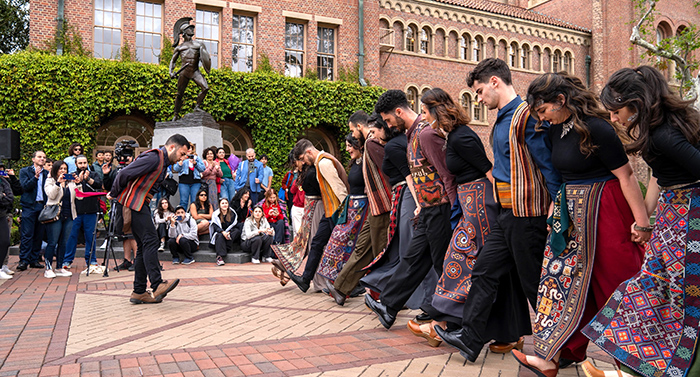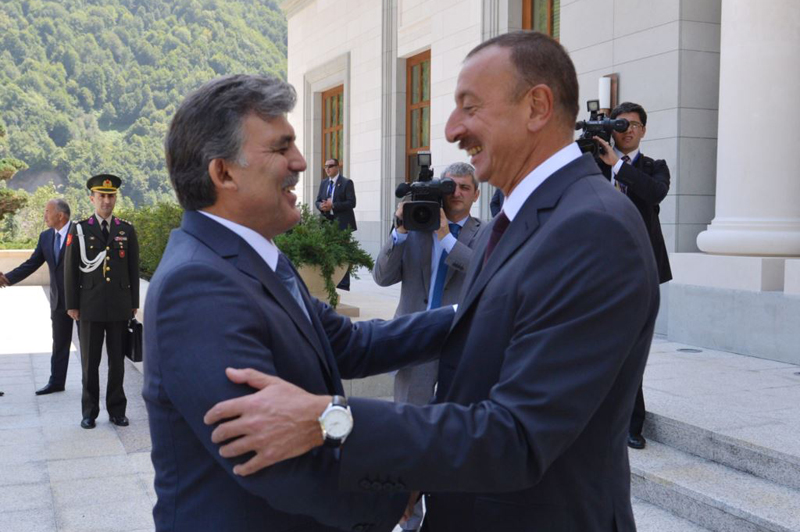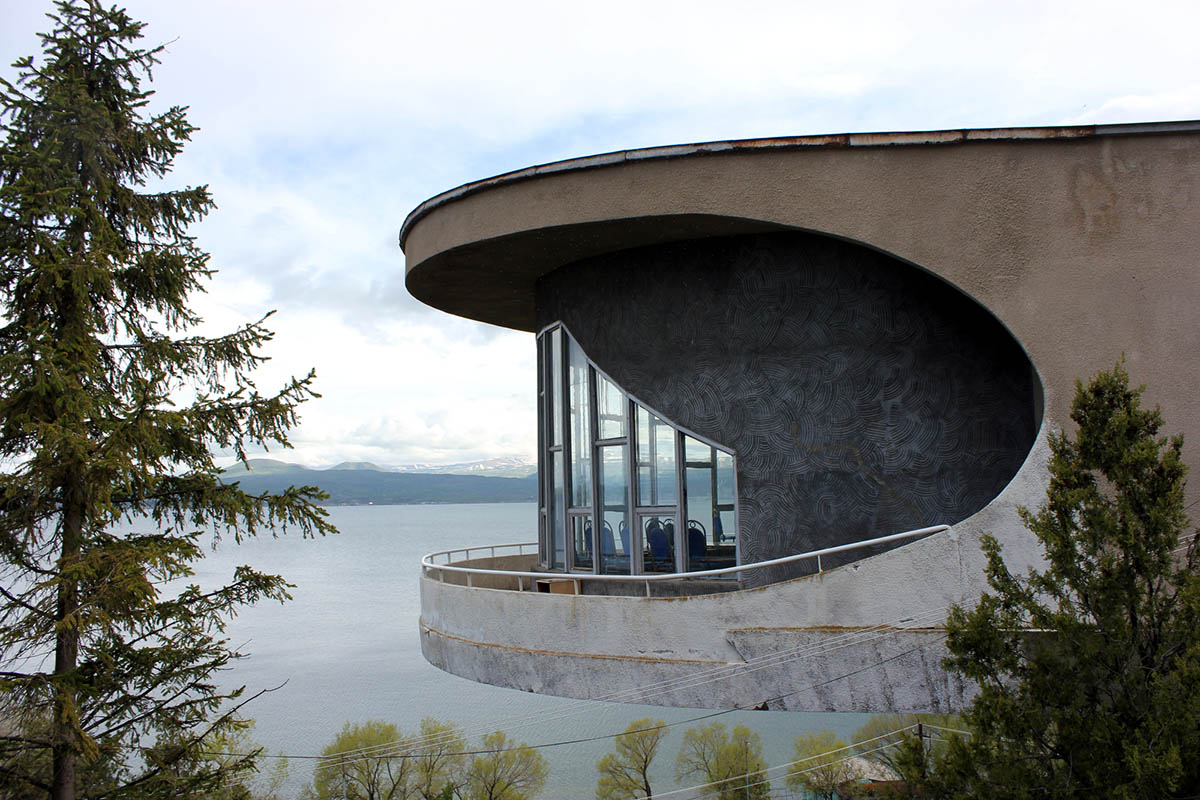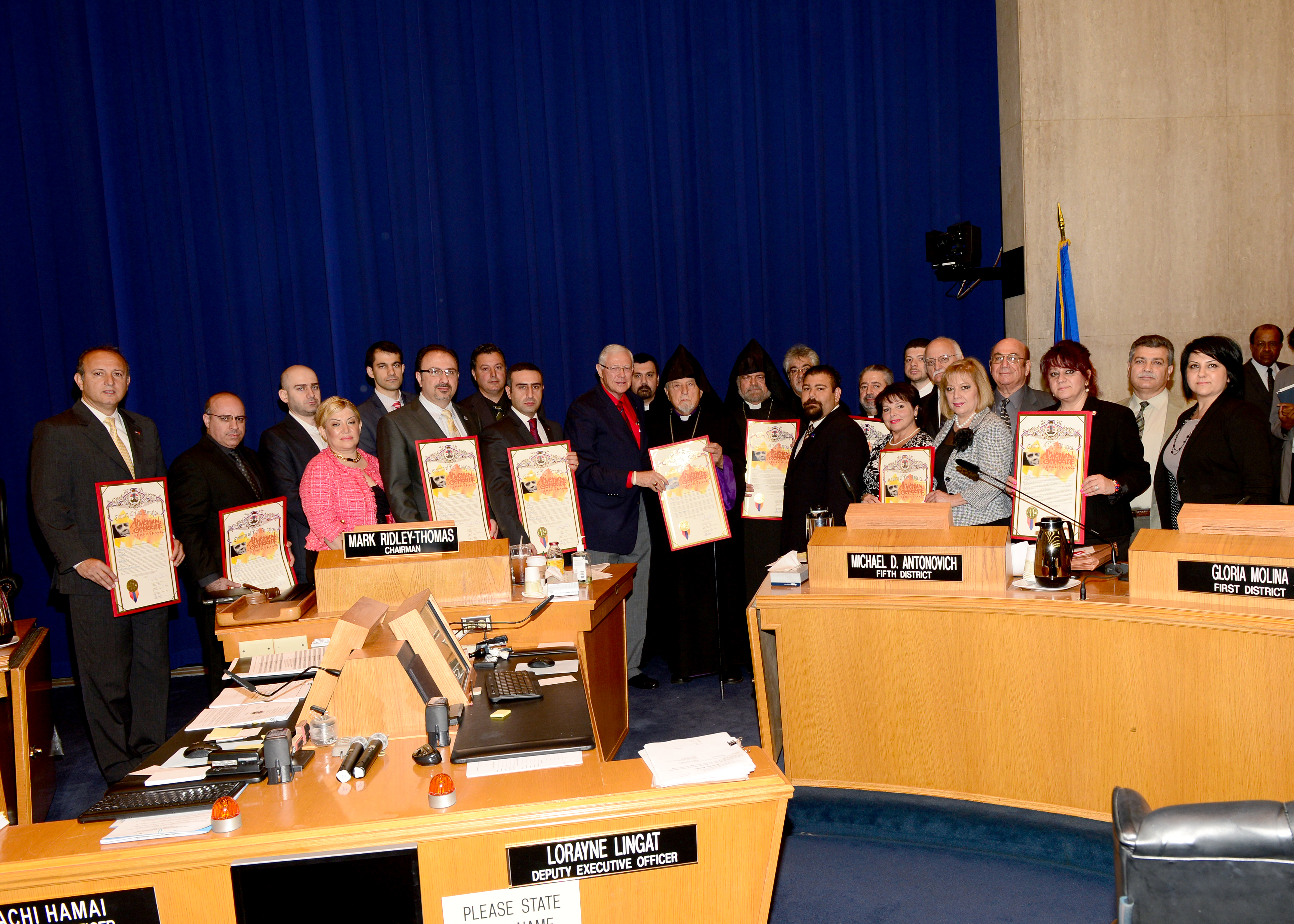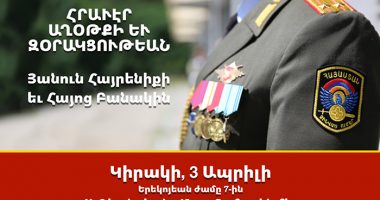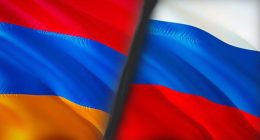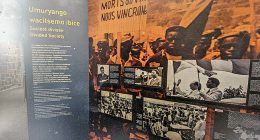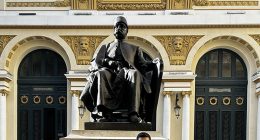LOS ANGELES — Hundreds gathered at USC’s Hahn Central Plaza on April 4 for an exhilarating opening ceremony of the inaugural Armenian History Month, marking a monumental moment in the university’s history.
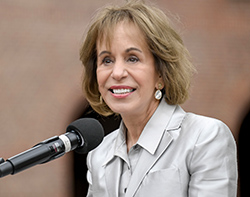

USC President Dr. Carol Folt launched Armenian History Month with a resonant speech: “Today we come together as one Trojan Family to celebrate the heritage of Armenian Americans on this campus and in this country.”
While standing on a stage adorned with an antique Armenian rug dating back to the 19th century from the Artsakh (Nagorno-Karabakh) region, courtesy of Silk Road Rug Inc., President Folt acknowledged the difficulties the Armenian community has faced in recent years, including “the catastrophic events in Artsakh forcing the Armenian population from their beloved homeland, and the ensuing humanitarian crisis and destruction of Armenian cultural and religious heritage.”
President Folt highlighted the achievements of Armenian alumni, staff, and faculty members throughout the years, citing examples such as the renowned former Dean of Engineering and Provost, Dr. Zohrab Kaprielian, after whom Kaprielian Hall is named, and the work of the USC Institute of Armenian Studies in advancing scholarship and cultivating Armenian heritage. She concluded with a quote from William Saroyan, emphasizing the spirit of Armenian culture and encouraging attendees to engage in learning and discovery throughout Armenian History Month.
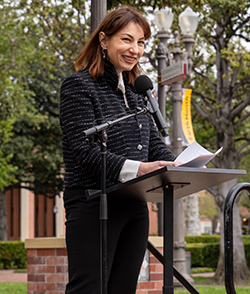

Dr. Shushan Karapetian, Director of the USC Dornsife Institute of Armenian Studies, reflected on the grand narratives in Armenian history and the contributions of the Armenian diaspora across millennia, showcasing stories of resilience, innovation, and cultural exchange. She highlighted the visionary Los Angeles Armenians who founded the Institute nearly twenty years ago and their commitment to “an academic unit with the resources and brainpower of a university that would make sense of contemporary developments in the Armenian story, and more importantly, help shape the future of the Armenian experience.”
Her speech emphasized the multifaceted nature of Armenian history and its enduring relevance in shaping global narratives and identities. “I hope that by the end of the month, every Trojan will have an Armenian story to share that won’t end on April 30 but will lead to new beginnings for the future,” concluded Dr. Karapetian.
An energizing performance by Lernazang, a cultural collective and performance ensemble whose mission is to strengthen Armenian cultural heritage in Los Angeles, captivated the audience with a vibrant display of traditional Armenian music and dance. Three Trojans—two students and a USC Institute of Armenian Studies staff member—are among their members.
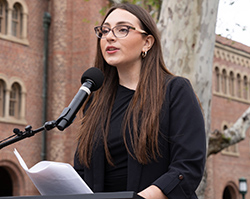

In her closing remarks, Mane Berikyan, Vice President of the USC Armenian Students’ Association, expressed her excitement for the historic moment: “Today, we made history. Together, we marked the beginning of the first-ever Armenian History Month at USC—a now annual tradition that USC will recognize and honor for the years to come.”
The success of the opening ceremony sets a promising tone for the remainder of Armenian History Month, with a lineup of engaging events and activities planned to further explore and celebrate Armenian history, culture, and identity.

